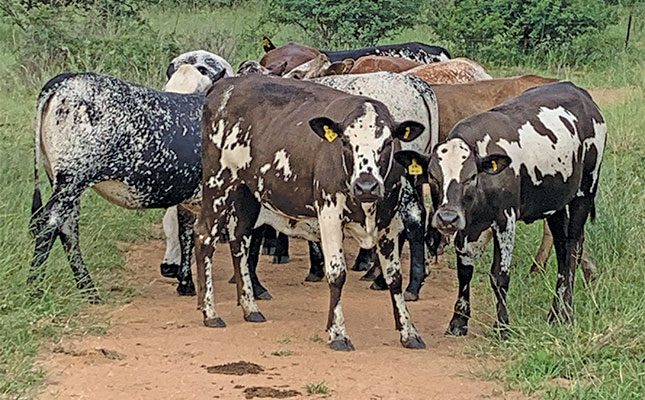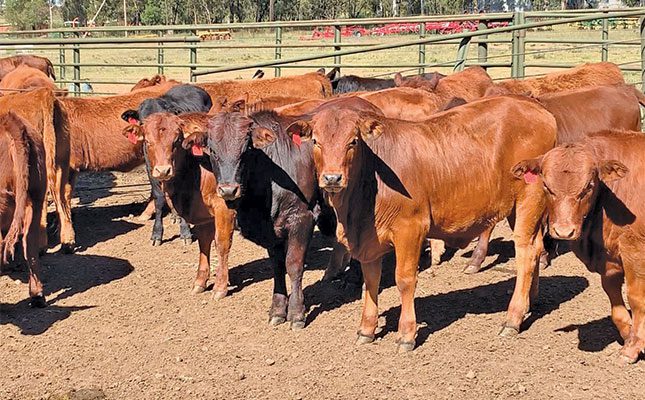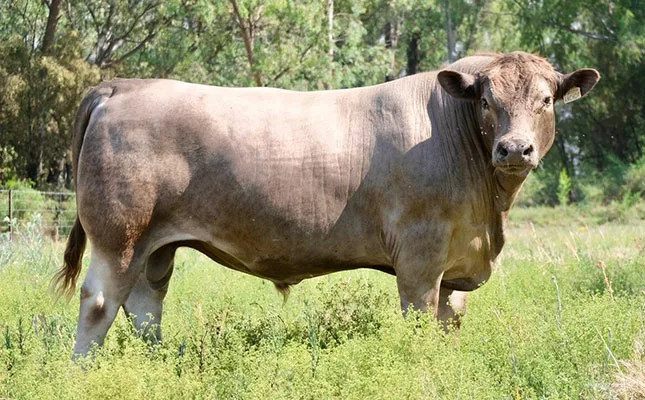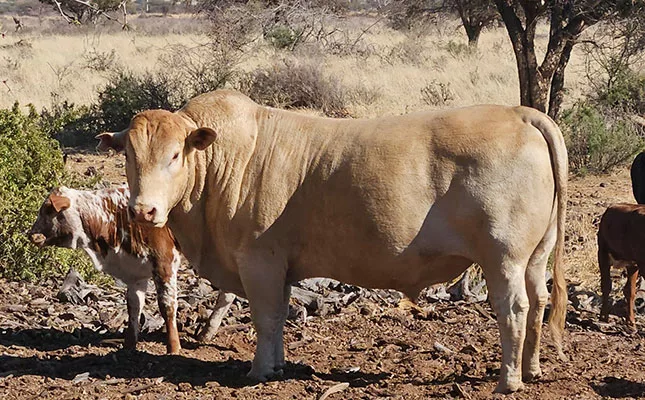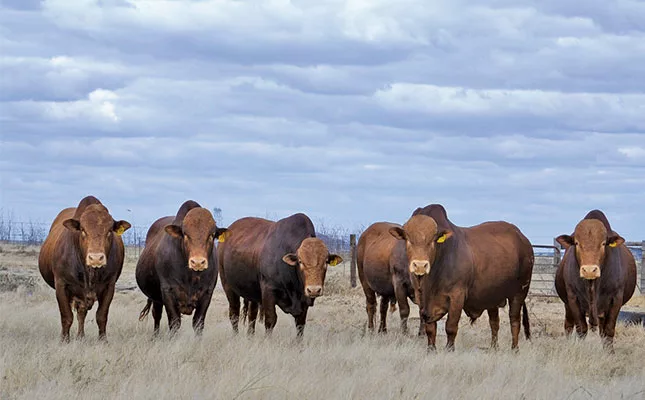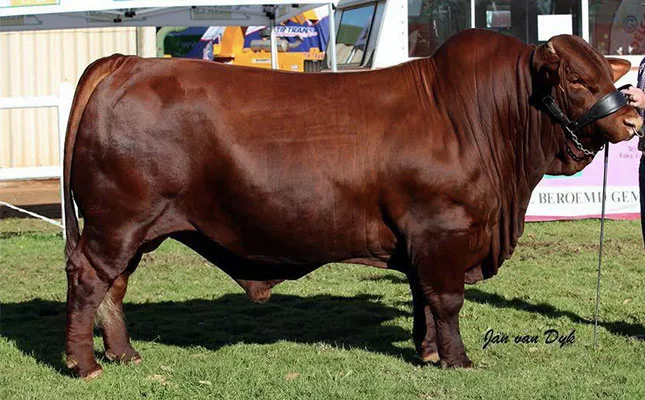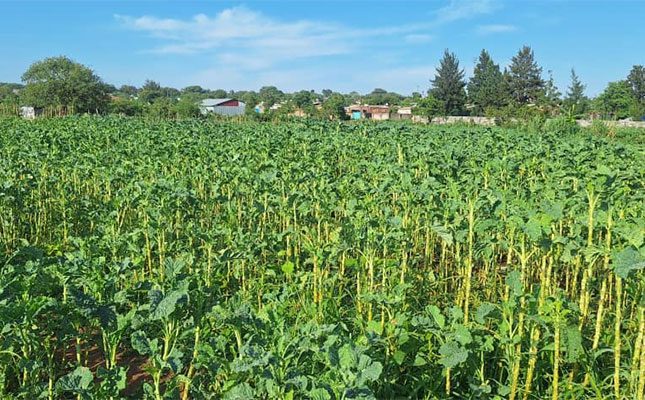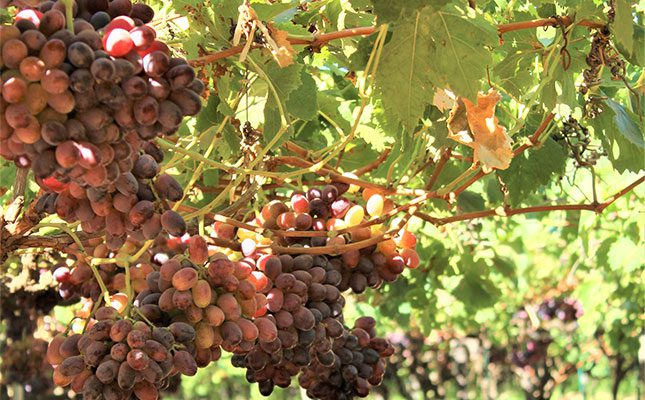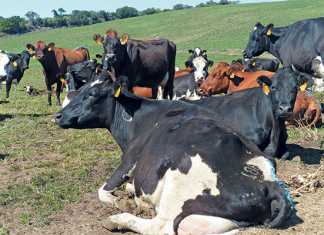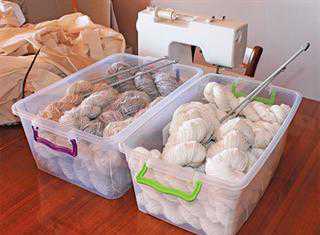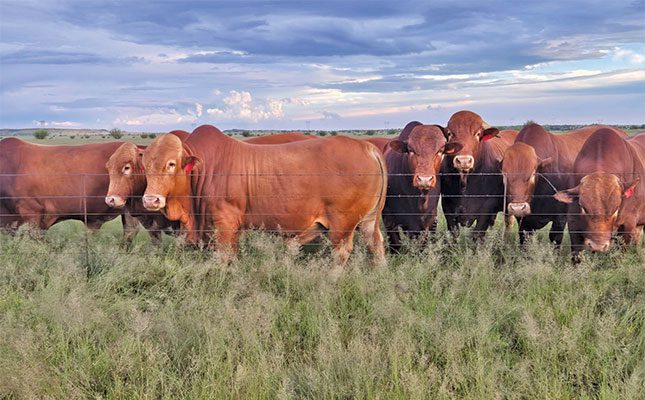
Photo: Supplied
As South Africa’s agriculture sector adapts to changing climate conditions, rising input costs, and increasing demand for sustainable beef production, some farmers are revisiting traditional livestock breeds known for their hardiness and efficiency.
The Afrikaner cattle breed, with its deep local roots and unmatched resilience, can be a contender for modern beef systems.
Speaking to Farmer’s Weekly, Free State farmer and Afrikaner breeder Jannie Visagie, who farms on 7 500ha of natural veld, says the time has come to reconsider this indigenous beef breed not only for its historical value, but for its economic and environmental advantages.
“The Afrikaner is one of the toughest breeds you can run. They might not be as popular as some exotic breeds in the feedlot market, but when it comes to surviving heat, drought and veld conditions, nothing beats them,” he says.
Tough traits for tough conditions
According to Visagie, the Afrikaner breed originates from the indigenous Sanga cattle of Southern Africa and has been bred over centuries to suit local environments. With their characteristic red coats and strong frames, they are well adapted to both high temperatures and limited grazing.
“Afrikaner cattle don’t struggle in extreme heat. Our bulls cover cows just as well in summer as they do in winter. We see no drop in conception rate during the warmer months,” says Visagie.
He added that their performance during drought is equally impressive. “I once spoke to a farmer in Namibia during a bad drought. He said the Afrikaner cows got thinner but didn’t die. They kept going, even when other breeds gave up,” says Visagie.
A natural fit for extensive systems
According to Visagie, one of the Afrikaner’s strongest advantages is its suitability for extensive veld-based production systems.
“They’re veld animals. They walk long distances to find water and forage. They don’t stand and wait to be fed. That alone saves the farmer a lot in input costs,” he says.
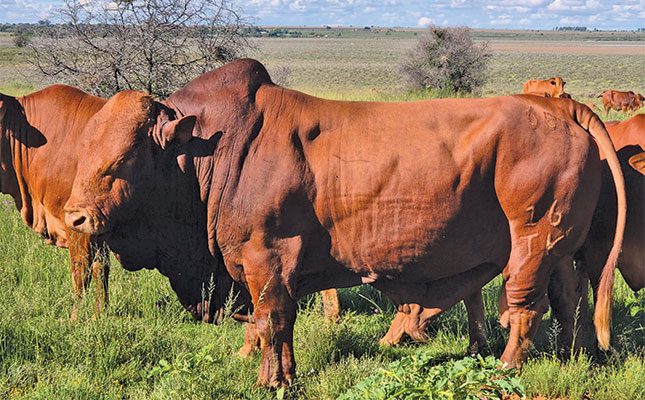
Unlike more feed-dependent breeds, the Afrikaner requires minimal supplementation. Visagie says that during winter, when natural grazing loses its nutritional value, a basic protein lick is enough to maintain condition.
“We give them a protein lick in winter and that’s all. If the drought worsens, we switch to an energy lick, but it’s always minimal input,” he says.
Growth and weaning weights
Farmers interested in breed performance often ask about weaning weights and growth rates, and Visagie is clear that the Afrikaner delivers when managed well.
“My heaviest bull calf this year weighed 313kg after just 210 days. Our highest adjusted weaning weights, submitted to SA Studbook, show 301kg for bull calves and 278kg for heifers,” he says.
On average, under good veld conditions, his bull calves can wean at 250kg to 300kg. In winter, this figure drops slightly too around 230kg to 240kg, depending on rainfall and veld quality.
Visagie also tested the breed’s performance in a commercial feedlot environment to compare results.
“I sent a batch of Afrikaner calves to the feedlot near Christiana. Their average daily gain was 1,8kg, which is above the industry average of 1,6kg/day. This proves the Afrikaner can perform well if it’s a well-bred line,” he says.
Advice for farmers on crossbreeding
Visagie further mentions that the Afrikaner’s strong maternal traits and calving ease make it highly valuable in crossbreeding systems, especially for farmers trying to improve herd fertility and reduce birthing complications.
“Afrikaner bulls, especially when mated with our heifers, produce calves without birth issues. There’s no calving trouble at all,” he says.
He has also successfully used Simmentaler and Santa Gertrudis bulls on Afrikaner cows in the past.
“The crossbred cows made excellent mothers with good milk and heavy calves. There’s real hybrid vigour there,” he says.
Low input, high reward
In a tough economic environment, many farmers are looking to reduce their costs without sacrificing performance. For Visagie, the Afrikaner’s low input demands make it a smart financial choice.
“I use less feed and fewer vaccines, and I don’t need expensive management systems. I vaccinate once a year with Supavax, and that’s it,” he says.
Health resistance is another benefit. “Afrikaners don’t easily get diseases like lumpy skin or snotsiekte. Even in areas where buffalo and exotic cattle fall ill, Afrikaners stay strong. They’re just naturally resistant, and this means fewer veterinary interventions and lower operational costs overall,” he says.
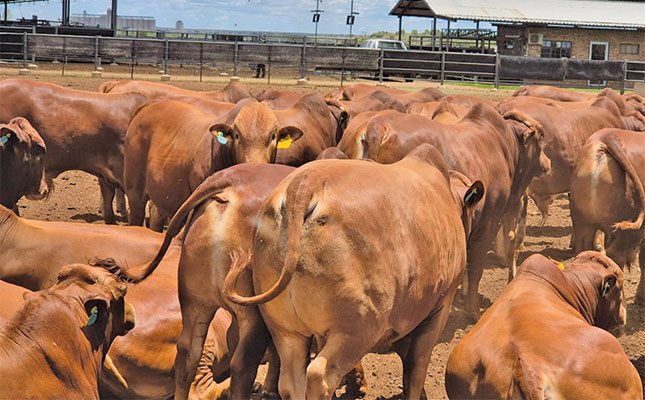
Addressing the Feedlot Bias
Despite these advantages, Visagie acknowledges that market bias remains a challenge for Afrikaner producers.
“Many feedlots still don’t want Afrikaner calves. In some cases, it’s justified, especially when the animals haven’t been selected properly. But a lot of it is just old perception,” he says.
He advises farmers to record and submit performance data to the Afrikaner Cattle Breeders’ Society of South Africa in order to improve the breed’s image.
“We’ve completely shifted focus in the past six years. We’re selecting for growth, milk, and calving ease and we’re seeing results. If we want the feedlots to take us seriously, we need to improve our numbers,” he says.
Where the Breed Thrives
Contrary to the idea that some breeds only do well in specific regions, Visagie says the Afrikaner is adaptable across all provinces.
“Whether you’re in the hot Northern Cape or the colder Free State, the Afrikaner can handle it. I don’t think there’s any area in South Africa where you can’t farm this breed,” he says.
He further mentions that, while best suited to extensive systems, the breed can also be adapted to more intensive models with the right support.
“They’ll perform well under pressure, but they’ll thrive on the veld,” he says.
Excelling in cold and heat
While the Afrikaner is known for thriving in hot, dry conditions, Visagie says the breed also holds up remarkably well in colder areas, such as the Free State highveld.
“When the cold fronts come in from the Cape, you can see they drink a little less water and conserve energy, but they cope just fine. You never have real problems with them struggling in cold weather. And compared to some breeds that go and hide away under shade cover in the heat, the Afrikaner still grazes right through the hottest part of the day,” he says.
According to Visagie, this makes the breed especially versatile for farmers across South Africa, but he says it’s particularly suited for areas with temperate to hot climates.
“I believe they do even better in moderate to warm regions. They can manage in cold areas, but give them heat and veld, and they shine,” he says.
Advice for emerging farmers
When asked what advice he would give to young or emerging farmers interested in the Afrikaner, Visagie is practical and direct.
“Start by selecting for good milk and growth traits. If you’re buying bulls or heifers at an auction, check their breeding values, especially their milk and growth figures. Don’t just pick animals that look good; pick them for performance,” he says.
He also mentions the importance of fertility in long-term herd building. “Always buy animals from fertile mothers and families with strong fertility backgrounds. Even within the breed, fertility can vary, so be selective,” he says.
But even strong reproductive performance doesn’t always guarantee commercial interest. Visagie points to the ongoing pressure from feedlots.
“Even if my Afrikaners are highly fertile, it doesn’t always convince the feedlot buyers. They’re looking for a certain average daily weight gain, and we have to prove that our calves can match that. For us as breeders, the milk and adaptability are important, but we mustn’t ignore growth data. We need to compete,” he explains.
His long-term vision is to help shape an Afrikaner that can compete with top beef breeds on both performance and profitability, while retaining its signature hardiness and local adaptability. He encourages young farmers especially not to overlook the breed simply because of market perception.
“Perception is not fact. The modern Afrikaner is not the same as it was 20 years ago. We’ve worked hard to improve milk, growth, and fertility. If you manage them right, they’ll give you everything you need and cost you less doing so,” he says.
A breed for the future
As commercial farming systems evolve and sustainability becomes central to profitability, breeds like the Afrikaner with their ability to produce under harsh, low-input conditions are becoming increasingly relevant.
Whether for emerging farmers seeking hardy, low-cost cattle, or commercial producers looking for resilient genetics for crossbreeding, the Afrikaner stands out as a breed worthy of serious consideration.
“You can go spend a fortune on feed, medicine and high-maintenance breeds, or you can invest in a red cow that looks after herself and still gives you a solid calf every year. For me, it’s a simple choice,” he says.
For more information email Jannie Visagie at [email protected].

